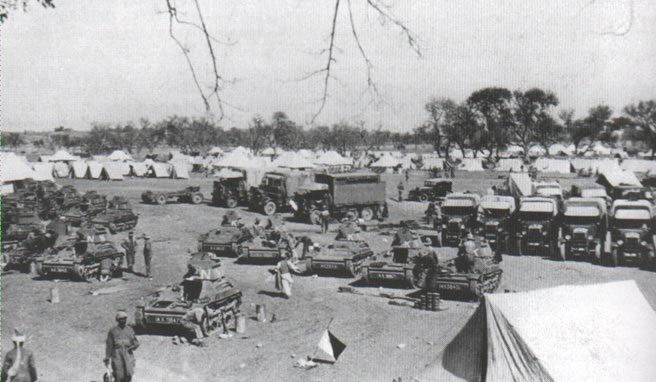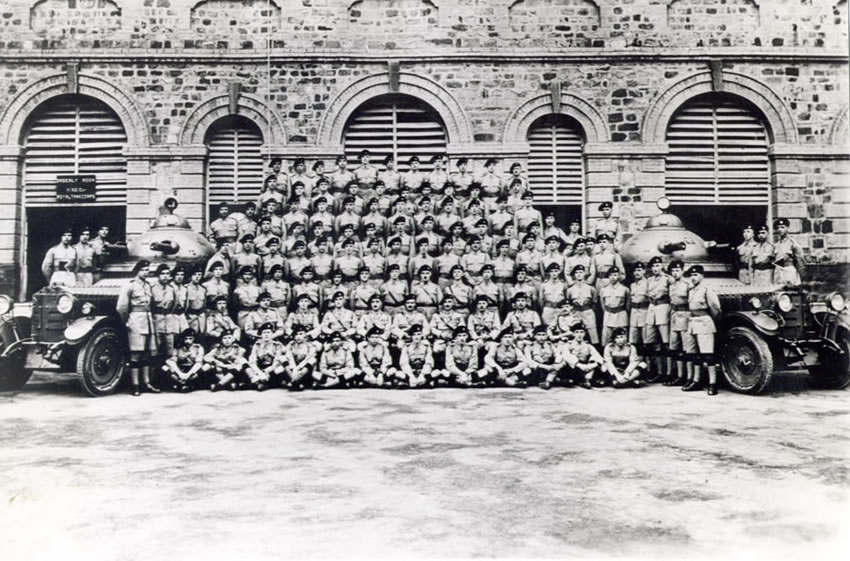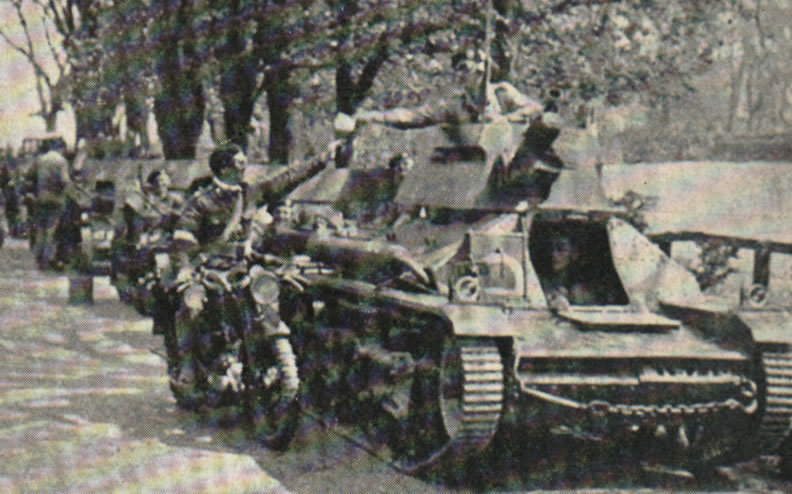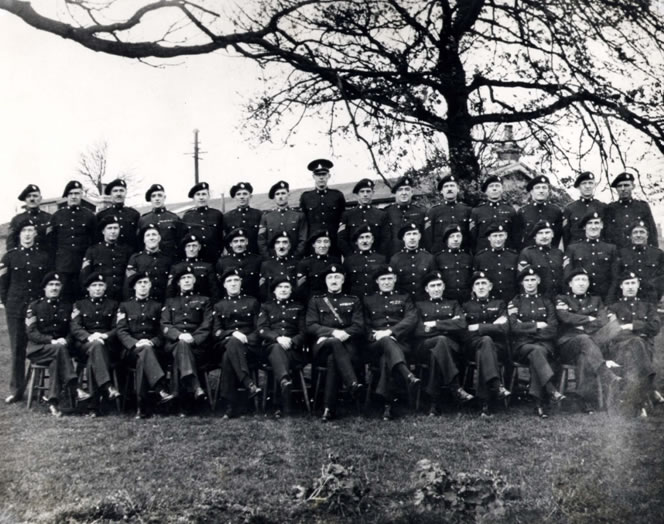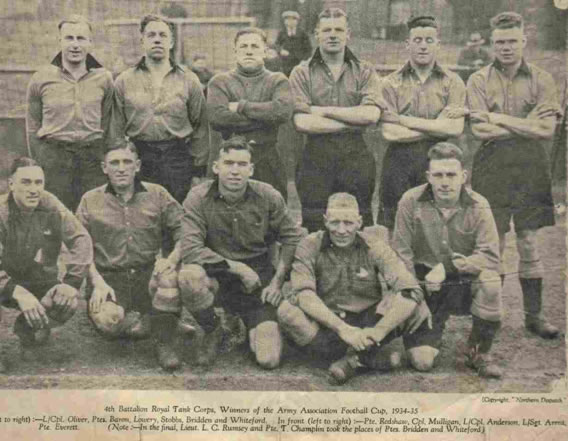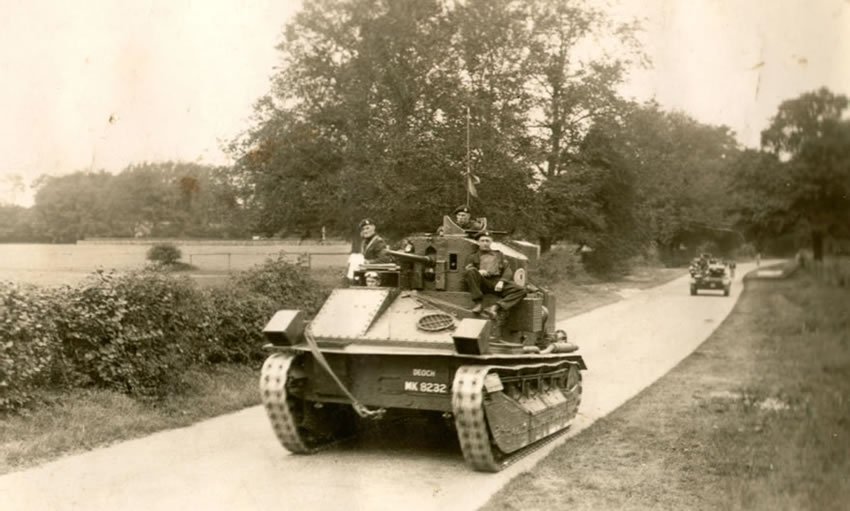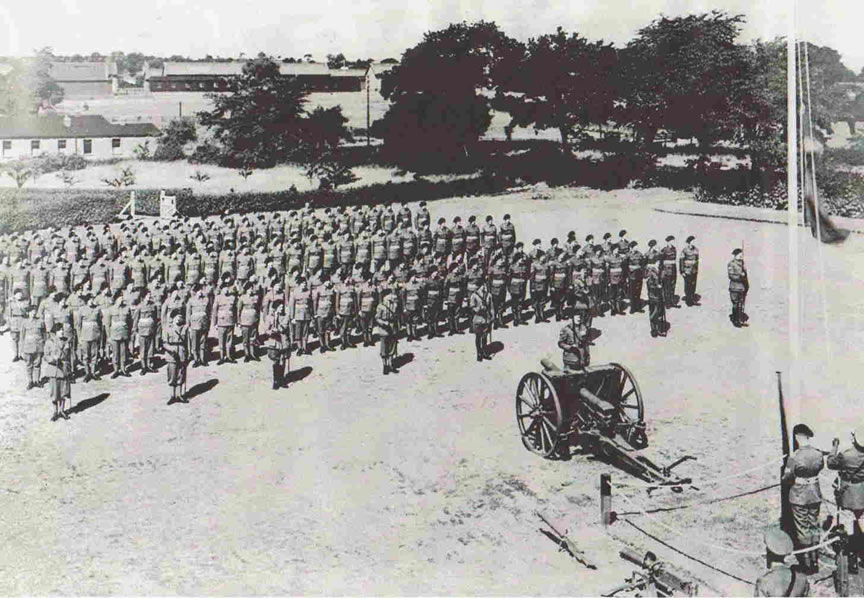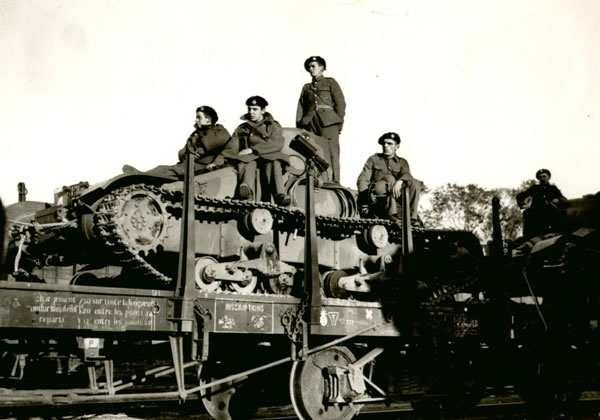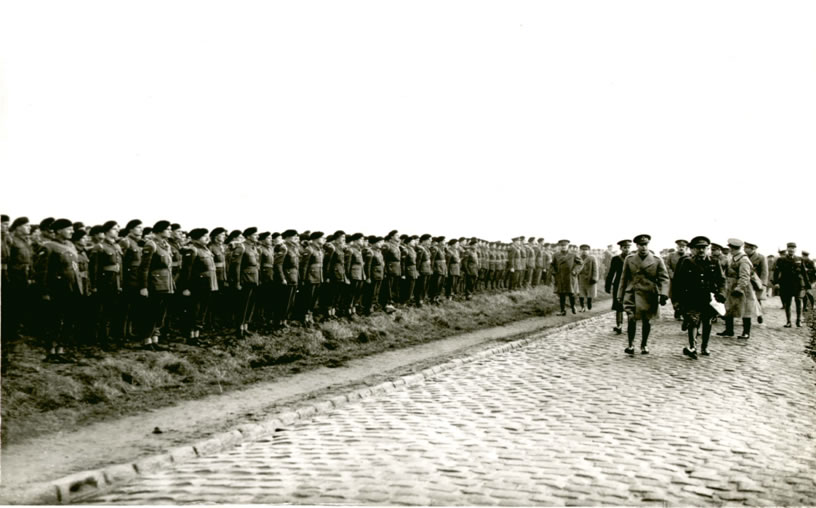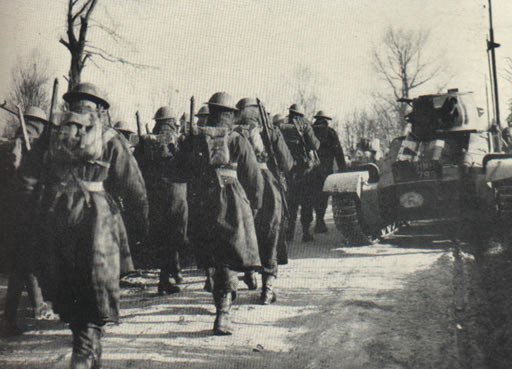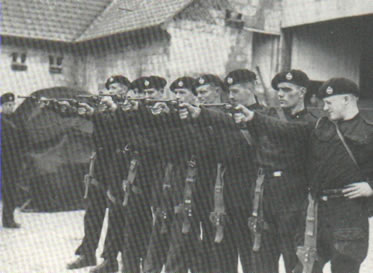1918 – 1939
 |
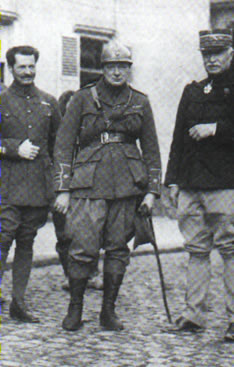 |
Demobilisation and disbandment wrought havoc with the Tank Corps; indeed its very existence was threatened. One of the staunchest and most visionary proponents of the tank was Colonel (later Major General) J F C Fuller, at this time Head of SD4 in the War Office, responsible for all-arms training. Another man with both vision and voice was Winston Churchill.
The Seventh was disbanded on 24 May 1919.
“Our God and soldier we alike adore When at the brink of ruin, not before. After deliverance, both alike requited, Our God forgotten and our soldiers slighted”
Francis Quarles 1592-1644‘,
Nothing new!
 |
 |
The Fourth remained briefly in Germany as part of a Tank Corps group which itself was fast dwindling because of demobilisation. The Battalion was reconstituted at Wareham in February 1920 under Lt Col E B Hankey and thereafter spawned a series of armoured car companies, used to put down trouble in various parts of the Empire.
1st and 2nd Armd Car Coys equipped with Rolls Royce cars were rushed to Iraq in March 1920 to help put down a rebellion; later 3rd and 4th Coys went to Egypt and Palestine, the 5th to China and the 7th and 8th to India. 3rd Coy is shown here in Hassan Abdul, Egypt.
The 4th Bn provided armoured cars in Edinburgh during the confrontational coal strike. They also provided the permanent staff for the 19th Armd Car Coy (Lothian and Border Horse) an association that was to last for 48 years. Thus began the Fourth’s links with Scotland.
In 1923 The Tank Corps was granted the Royal Prefix and a new cap badge was taken into use.
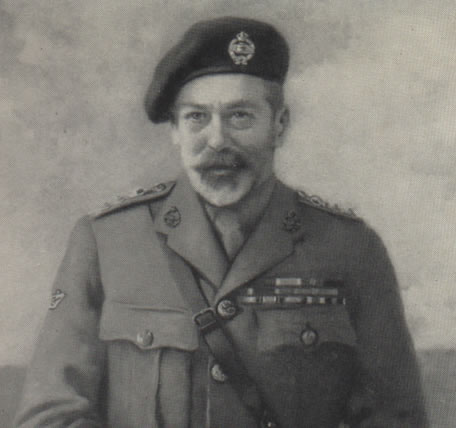 |
 |
The Black Beret was adopted by the Royal Tank Corps in 1924. Here it is worn by our Colonel in Chief and by our Colonel Commandant, Major General Sir Ernest Swinton KBE,CB,DSO.
In 1926 the Fourth moved to Catterick and remained there for nine years. By 1935 the regiment was almost entirely made up of men from Scotland and Northern England. Here Staff Sergeant (later RSM Sinclair, killed during the escape from Dunkirk) dispenses cups of gunfire?? – celebrating Cambrai perhaps!!

Throughout the late 1920s and early 1930s the Fourth Battalion”s progeny – the armoured car and light tank companies – remained deployed throughout the Empire.7 Coy are shown here in Peshawar, India
No 10 Armoured Car Company equipped with Crossley Armoured Cars was based in India in 1928 to at least 1935, serving in Quetta, Razmak, Kirkee, Ahmednagar, Baluchistan and Waziristan wherever there were significant disturbances.
I am obliged to Christopher Gilligan whose Father served in 10 Armoured Car Company for these images.
| Bovington instructors training? 24 April 1929. |
Many of these officers and men would fight and die within ten years. |
 |
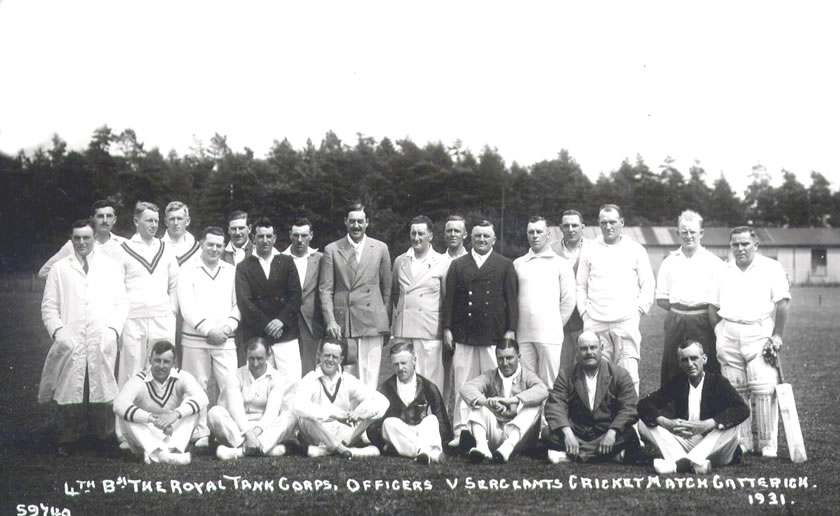 |
| The Fourth were finalists in the Army Rugby Cup in 1931. | The Officers of the Fourth in Catterick in 1932 CO Lt Col M A Studd DSO MC |
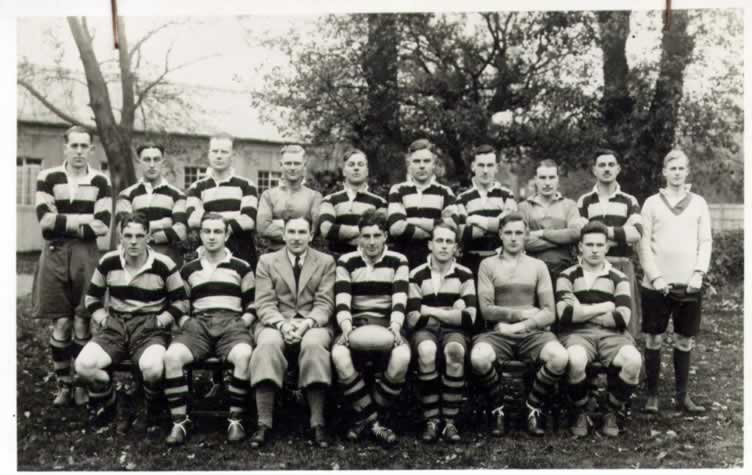 |
 |
 |
 |
The Fourth were in Catterick for nine years where they concentrated on infantry/tank cooperation. They thus missed the first three exciting years of tactical experimentation centred on 1st Tk Bde, here seen on exercises in 1932 under Brigadier Charles Broad and later under Brigadier Percy Hobart.
Between 1933 and 1937 the Fourth had an outstanding football team. It is believed that this was at the end of the 1933 season in which they reached the semi-finals of the Army Cup.
In the 1934/5 season the Fourth won through to the final of the Army FA Cup by beating the Black Watch 3-1. Lance Sergeant “Jock” Armitt (a hero at Arras six years later and eventually RSM of the Seventh) is seated second from right.
The Fourth won the Army Cup by beating the Royal Ulster Rifles in the final by six goals to three. By the age of 25 Lance Sergeant Armitt, seated second left, had scored 100 goals for the Regiment and he added to his tally in both matches. He went on to play for the Army and was selected to play for Scotland but postings intervened.
In 1935 the Fourth joined 1st Tk Bde and moved first to Catherington Down, Petersfield and a year later to Pinehurst Barracks, Farnborough. They were equipped with Vickers Medium Tank Mk I and II, and Light Tank Mk VI B.
| The Fourth”s Hockey team 1936 The captain seated centre is H R B Foote (later VC DSO). |
It would appear that in the 1936/7 Season the Fourth again reached the semi-finals of the Army Cup |
 |
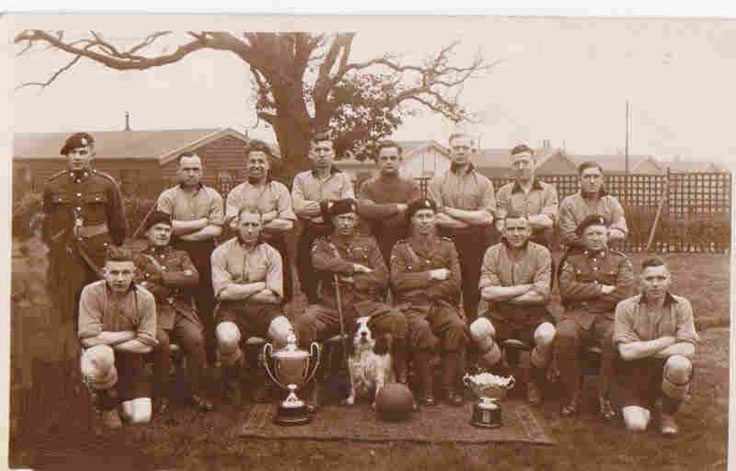 |
By the 1938 Munich Conference the storm clouds were gathering.
Goering, Mussolini, Hess (behind), Hitler and an Italian General.
Lt Peter Vaux (commander) and Pte Bowden (driver) demonstrate an A Coy Matilda Mk I in early 1939 under the scrutiny of Lord Gort (leaning forward), King Carol of Romania, Major S J Fernie (OC A Coy) and Crown Prince Michael.
In the shadow of impending war the Royal Tank Corps was rapidly expanded. 7th Battalion Royal Tank Corps was reformed at Catterick on 21 May 1937, receiving drafts from the Fourth.
On 4 April 1939 4th and 7th Bns RTC became 4th and 7th Bns RTR. Strictly speaking they did not become 4 RTR and 7 RTR until 18 September 1945 but for editorial convenience we shall hereafter refer to them as such. On the same day the Royal Armoured Corps was created from the tank regiments and the mechanised cavalry and Yeomanry. A further twelve Royal Tank Regiments began to be formed from territorial infantry battalions.
On 19 September 1939, two weeks after Great Britain and France declared war, 4 RTR deployed to France, here seen entraining at Cherbourg for the Vimy Ridge area. They were the first tank-equipped regiment to join the BEF.
The best armoured vehicle available to them was the slow heavily armoured Matilda Mk 1, of which they had fifty. The commander of the two-man crew was kept very busy loading the brutish .50 HMG and operating the radio which was badly placed right rear of the turret floor.
The Fourth deployed initially to the Vimy area, from where they carried out extensive recces of the Belgian Border and nearby Cambrai under the direction of Lt Col Gatehouse, Maj FitzMaurice (2 I/c) and Maj Holford-Walker (C Sqn), all Cambrai veterans.
The same farmyard in the centre of Acq which had been occupied by A Squadron 4RTR in Sept-Oct 1939. Located and identified by Tim Strickland in 2015 at Acq, just 1.5 miles down the road from Mont St Eloi .
In November they moved down to the Somme area where they were billeted in squadron villages such as Domart. Most officers and men found a bed with a family which made the response to the frequent operational “flaps” difficult to orchestrate. It was at this time that Lt Col FitzMaurice MC assumed command.
A constant reminder of what imminently faced the crews was given by the military cemeteries around every village in which the Fourth were billeted.
On 6 December 1939 the Regiment was visited by His Majesty the King
Having so recently been with them, the King”s New Year broadcast struck a resonant note for the Regiment when he quoted
“I said to the man at the gate of the year, give me a light that I may tread safely into the unknown. And he replied – go out into the darkness and put your hand into the hand of God. That shall be to you better than the light and safer than a known way”
